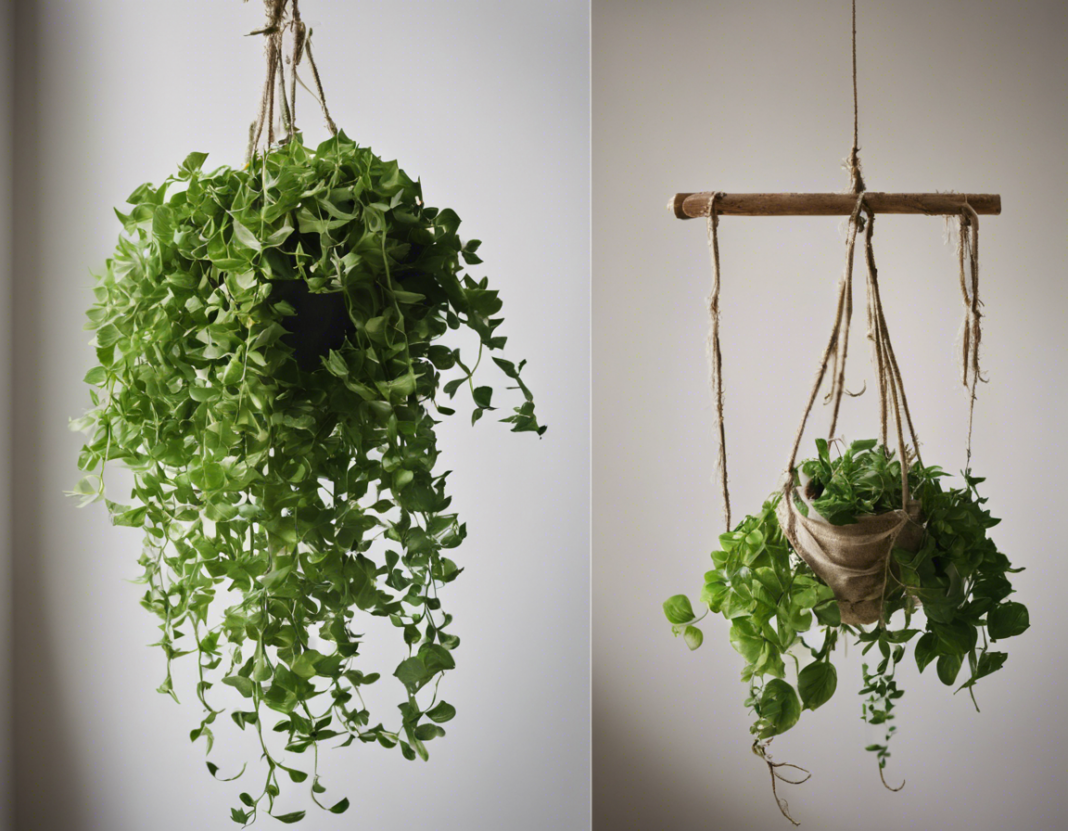Introduction
Drying herbs is an effective method of preserving their flavors and aromas for long-term use in cooking, teas, and various other applications. While there are several techniques for drying herbs, hanging plants whole is a traditional approach that many herb enthusiasts swear by for achieving the best results. In this comprehensive guide, we will delve into the benefits of this method, the herbs that are best suited for hanging, the step-by-step process to do it effectively, and tips to ensure successful herb drying.
Benefits of Hanging Plants Whole
Hanging plants whole for drying offers several advantages over alternative methods. Firstly, this technique allows for the preservation of the herb plant in its entirety, capturing not just the leaves but also the stems and flowers, thus retaining a more complete range of flavors and aromas. The slow drying process that hanging facilitates helps in minimizing the loss of essential oils and flavors that can occur through faster drying methods like using an oven or dehydrator. Additionally, hanging herbs in bundles is an aesthetically pleasing way to dry and display them, adding a rustic charm to your kitchen or herb garden.
Best Herbs for Hanging
While many herbs can be dried by hanging, some are particularly well-suited for this method due to their sturdy stems and optimal flavor retention. Lavender, rosemary, thyme, oregano, sage, and mint are among the top choices for hanging whole. These herbs not only dry well without losing too much of their essential oils but also retain their flavors for an extended period, making them ideal candidates for hanging plants whole.
Step-by-Step Guide to Hanging Plants Whole
-
Harvesting the Herbs: Choose a dry and sunny day to harvest your herbs. Cut long branches of the herb plants, making sure to do so in the morning when the essential oils are at their peak.
-
Bundle Preparation: Gather 4-6 branches of herbs of similar length and remove any damaged or yellowing leaves. Tie the stems together tightly at the base using a string or rubber band.
-
Hanging Location: Find a warm, dry, and well-ventilated area to hang your herb bundles. Ideal spots include a kitchen with good air circulation or a sunny porch.
-
Hanging the Bundles: Use another piece of string to tie the herb bundles to a hook, nail, or rod. Ensure that the bundles are not overcrowded and have enough space between them for air circulation.
-
Drying Time: The herbs will usually take 1-3 weeks to dry completely, depending on the herb type and environmental conditions. Check the herbs regularly for any signs of mold or mildew.
-
Herb Storage: Once the herbs are completely dry and brittle, remove the leaves from the stems and store them in airtight containers away from direct sunlight to preserve their flavors.
Tips for Successful Herb Drying
- Avoid Moisture: Ensure that the herbs are completely dry before hanging to prevent mold growth. Any moisture in the herbs can lead to spoilage during the drying process.
- Proper Ventilation: Adequate air circulation is essential for drying herbs effectively. Choose a well-ventilated location to hang your herb bundles.
- Avoid Direct Sunlight: While herbs need to dry in a warm place, direct sunlight can cause them to lose their color and flavor. Opt for indirect sunlight for the best results.
- Labeling: It’s easy to mix up different herbs once they are dried. Label your herb bundles with the name of the herb and the date of hanging to avoid confusion.
- Pest Prevention: Check your herbs regularly for any signs of pests or insect infestations. If you notice any issues, discard the affected herbs to prevent the infestation from spreading.
Frequently Asked Questions (FAQs)
- Can any type of herb be dried by hanging plants whole?
-
While most herbs can be dried using this method, some delicate herbs like parsley and cilantro are better suited for faster drying techniques to prevent mold growth.
-
How do I know when the herbs are fully dried and ready for storage?
-
The leaves should feel dry, crumble easily, and retain their color and aroma. Stems should snap easily when bent.
-
What is the best way to clean herbs before hanging them to dry?
-
Gently rinse the herbs under cold running water to remove any dirt or debris. Pat them dry with a clean towel before bundling.
-
Can I hang different types of herbs together for drying?
-
It’s recommended to hang one type of herb per bundle to prevent mixing flavors. Different herbs may have varying drying times as well.
-
Is it necessary to strip the leaves from the stems after drying?
-
Yes, removing the leaves from the stems after drying ensures better storage and usability. Store the leaves whole and crush them when needed for use.
-
What should I do if I notice mold on my hanging herbs?
-
If mold develops on the herbs during drying, discard the affected bundles immediately. Ensure better ventilation and lower humidity levels for the remaining herbs.
-
Can I dry herbs indoors if I don’t have an outdoor space for hanging?
-
Yes, you can dry herbs indoors in a well-ventilated room with good air circulation. Hanging near a window or using a fan can help speed up the drying process.
-
Are there any herbs that are not suitable for drying by hanging?
-
Herbs with high moisture content like basil and chives may not dry well by hanging. Consider using a dehydrator or oven drying for these herbs.
-
What is the ideal temperature and humidity range for drying herbs?
-
Aim for a temperature range of 70-90°F (21-32°C) with humidity levels below 60% for optimal herb drying conditions.
-
How long can I store dried herbs for?
- Properly dried and stored herbs can retain their flavors for up to a year. After this period, they may start to lose some of their potency.
In conclusion, hanging plants whole for drying herbs is a simple yet effective method that captures the essence of the herb plant in its entirety. By following the steps outlined in this guide and incorporating the tips provided, you can ensure successful herb drying and enjoy the flavors of your homegrown herbs throughout the year.












